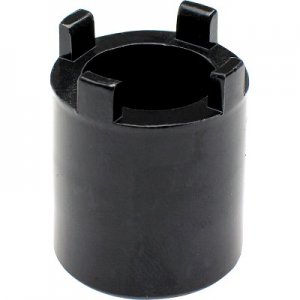- Joined
- Jan 2, 2014
- Messages
- 8,852
First, hit it with some good penetrant, I like a 50/50 mix of acetone and ATF(automatic transmission fluid)
Lots of good ideas above, let me add one more idea.....
find/make some keystock that fits the slots
find a pipe that fits over those four keys while held in the slots (maybe some magnets or tape to help hold stuff)
drill four holes thru the side of the pipe like little "widows" so you can see the four pieces of key stock
this to allow you to "plug weld" the key stock in place to the inside of the pipe while still on the nut. tack weld first, then you can remove from nut for more weld.
then either weld a socket into the other end of the pipe or use a pipe wrench on it.
-brino
Lots of good ideas above, let me add one more idea.....
find/make some keystock that fits the slots
find a pipe that fits over those four keys while held in the slots (maybe some magnets or tape to help hold stuff)
drill four holes thru the side of the pipe like little "widows" so you can see the four pieces of key stock
this to allow you to "plug weld" the key stock in place to the inside of the pipe while still on the nut. tack weld first, then you can remove from nut for more weld.
then either weld a socket into the other end of the pipe or use a pipe wrench on it.
-brino
Last edited:


